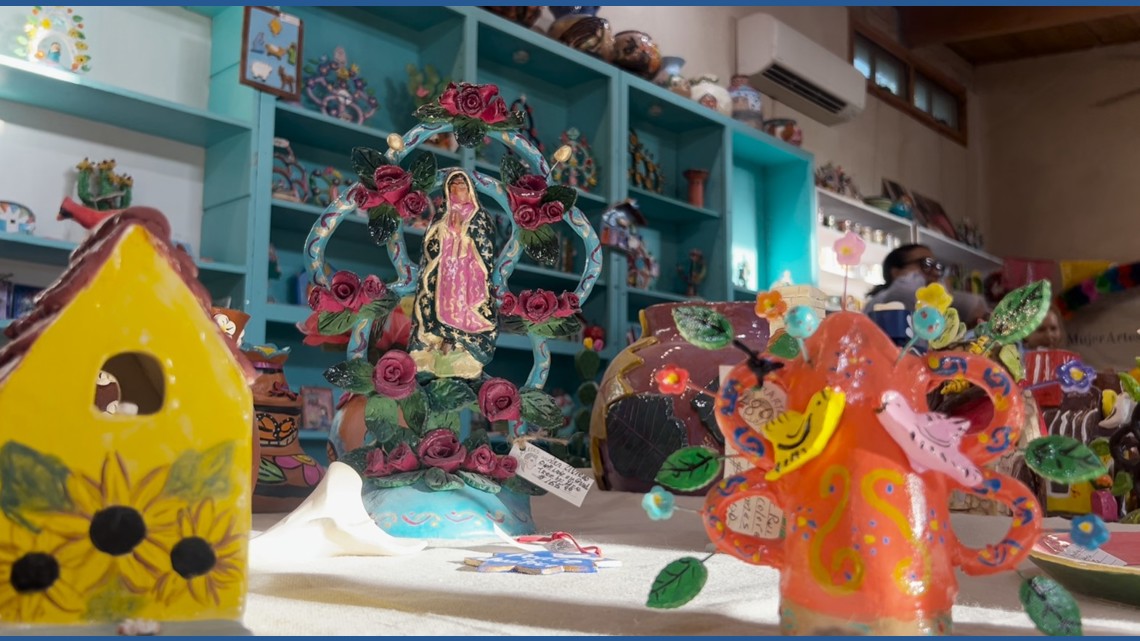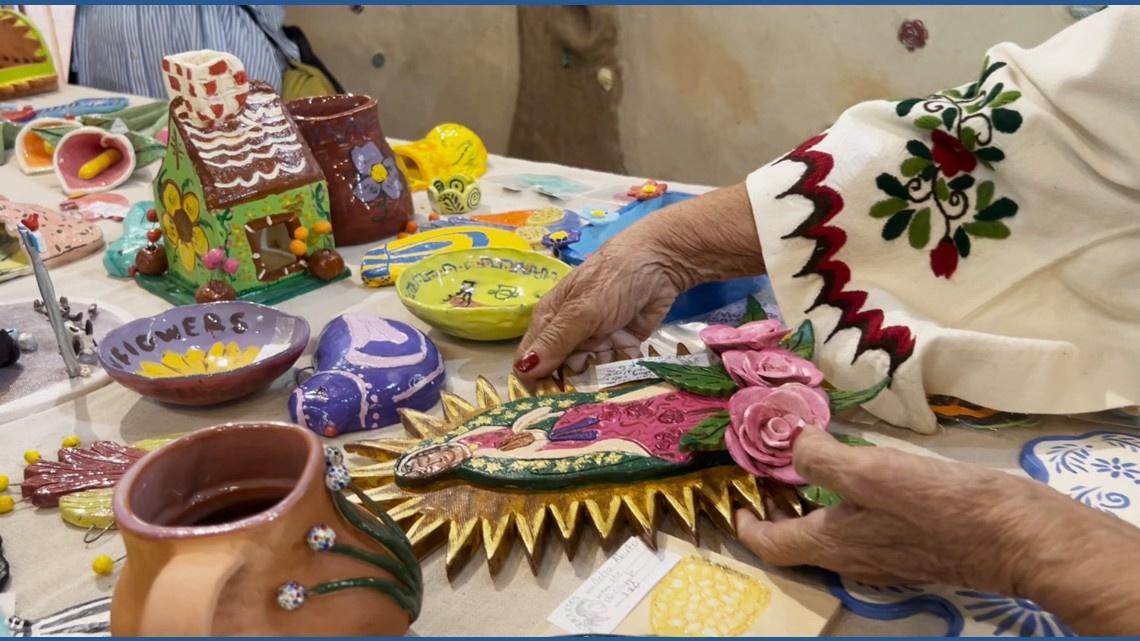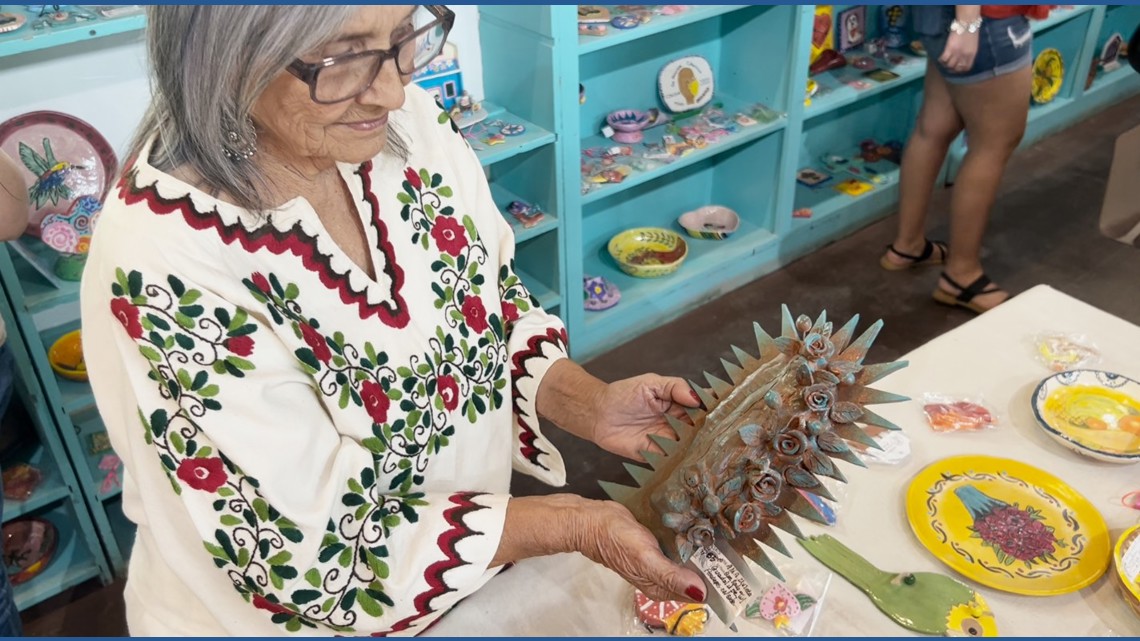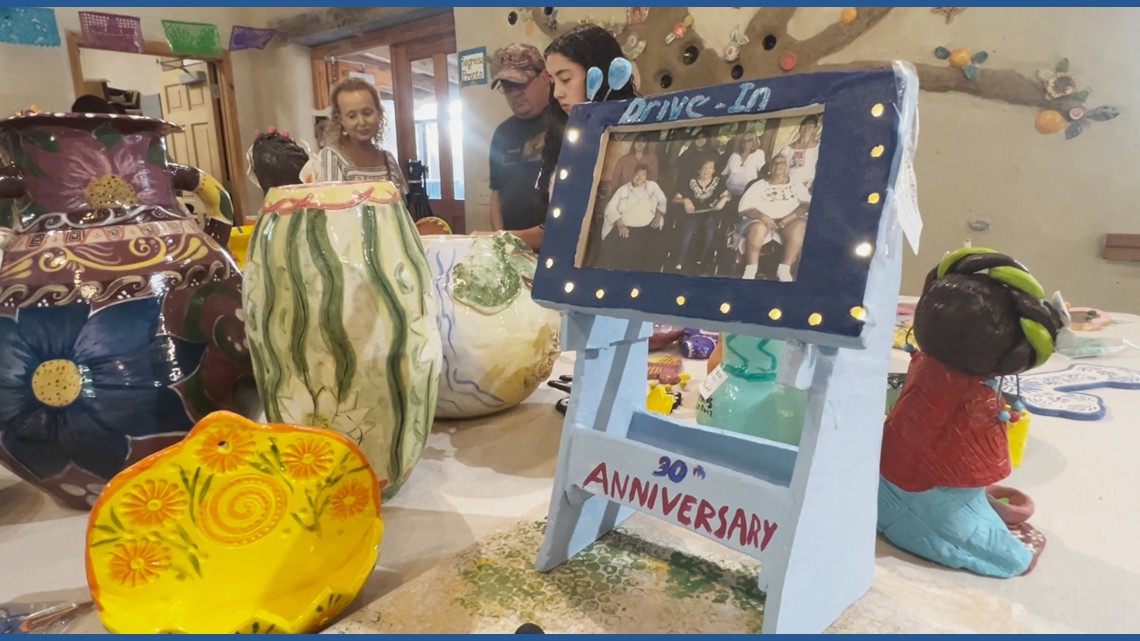“Our interest is for them to tell their story, the story of their family or of somebody in their community,” said the director of the Esperanza Center.
SAN ANTONIO — To enter into the adobe building that houses the MujerArtes Clay Cooperative in west San Antonio is to enter into history: The structure, constructed in 2017, was the first to be built in that historic area of the city in over a century.
To enter history is one thing. But inside the building – tucked away at Rinconcito de Esperanza off South Colorado Street – you start walking through the creation of it in real time.
That history is reflected in the hundreds of colorful clay tiles, mugs, plates, sculptures, ornaments, and other artworks big and small handmade by the women of MujerArtes, who may not have had an opportunity to explore their creative side if it wasn’t for this group first created in 1995.
“We imagined this project would be for women from the neighborhood and it would be for women who are low-income, who can’t afford to take classes at other places because to pay $250 a month was way outside of their ability,” said Graciela Sanchez, director of the Esperanza Peace and Justice Center, which runs MujerArtes. “So we imagined it and it’s survived 30 years later.”
The Texas Commission on the Arts helped pave the way for MujerArtes’ existence. Sanchez, a west-side native, picked up the baton as a way to highlight art made by women in a part of town where murals are the medium of art most visible to anyone traveling through.


Sanchez recalls going to school with the boys that would later create those murals.
But, she eventually wondered: What about the experiences and memories that girls had to share?
“It was like, ‘What happened to them? How come the guys continued to be artistic and the women disappeared to be mothers or workers and they didn’t get to express themselves?’”
Collaboration and community
MujerArtes held a 30th anniversary kickoff celebration at its home over the weekend, where the artists, along with community members, live music, food and – of course – plenty of art on display and for sale, commemorated the milestone.
Looking through the many pieces of art created by MujerArtes members was Ana Uviedo. She knows a little bit about the impact of the cooperative… she’s been part of it for 22 years.
“I didn’t know what I was doing, but I got involved and I did good,” said Uviedo of her first show with MujerArtes. “I had stories of the missions. I’ve been here ever since.”
She didn’t think she would stay active for as long as she has. An avid fan of Mexican art and Dia de Los Muertos, she says she came to a class during the Day of the Dead season to see what it was all about.
She kept on coming back. And over the past two decades, Uviedo said she’s now explored most of her family tree through her art.
That includes her grandmother, who lived on the grounds of Mission Espada.
“I love to do Our Lady of Guadalupe, I don’t know how many ladies of Guadalupe I’ve done,” she said.




Uviedo is an example of how MujerArtes has, in its own way, become self-sustaining.
The cooperative’s first teachers were from San Antonio and Mexico, but once that first generation of women clay artists was established, they took up the mantle of teaching new arrivals themselves.
At the heart of it all is providing access to art for a community that may otherwise not have had it. But one effect of MujerArtes’ 30 years in existence is that – through the teaching and camraderie – it’s produced a growing body of work that not only spotlights their creativity, but represents a document of life in a historic San Antonio neighborhood.
“The west side lacks the written history, the visual history, documentaries that are honest and truthful,” Sanchez said. “When they create a piece of art on a plate, on a cup or as a sculpted piece, our interest is for them to tell their story or the story of their family or of somebody in their community.”


The creations are sold, with the money going back to the women of the cooperative. But aside from the homes of appreciative buyers, the art has also been part of important exhibits: Working with UCLA staff, MujerArtes members in 2003 researched the crisis of murdered Ciudad Juarez women and created a few dozen works depicting their plight.
The works were briefly on display at a UCLA museum. The cooperative later raised about $5,000 through selling them—money they gave back to women in the Mexico border city.
“Here they are, low-income women, and they’re saying somebody else is suffering more,” Sanchez said. “That’s an example of them doing more than just for themselves, but thinking at not only the local or national (level), but on the global level.”
The Esperanza will continue to have dozens of pieces on exhibit – and for sale – until the current kickoff display ends Oct. 12, as MujerArtes looks forward to another three decades of empowering neighbors and awakening the artist in them. Visitors are welcome to see the display from 10 a.m. to 4 p.m., Monday through Friday.
Anyone 18 years and over is welcome to join the cooperative, the value of which is evident both in the artwork the women sell and also the process of learning to channel their creativity.
“In this country, it’s like everybody gets specialized,” Sanchez said. “‘You get to be an academic, you get to be an artist, you get to be a cleaning woman.’ Well, people who clean houses are also creative people. Just allow folks to have that spirit and not lose it.”
